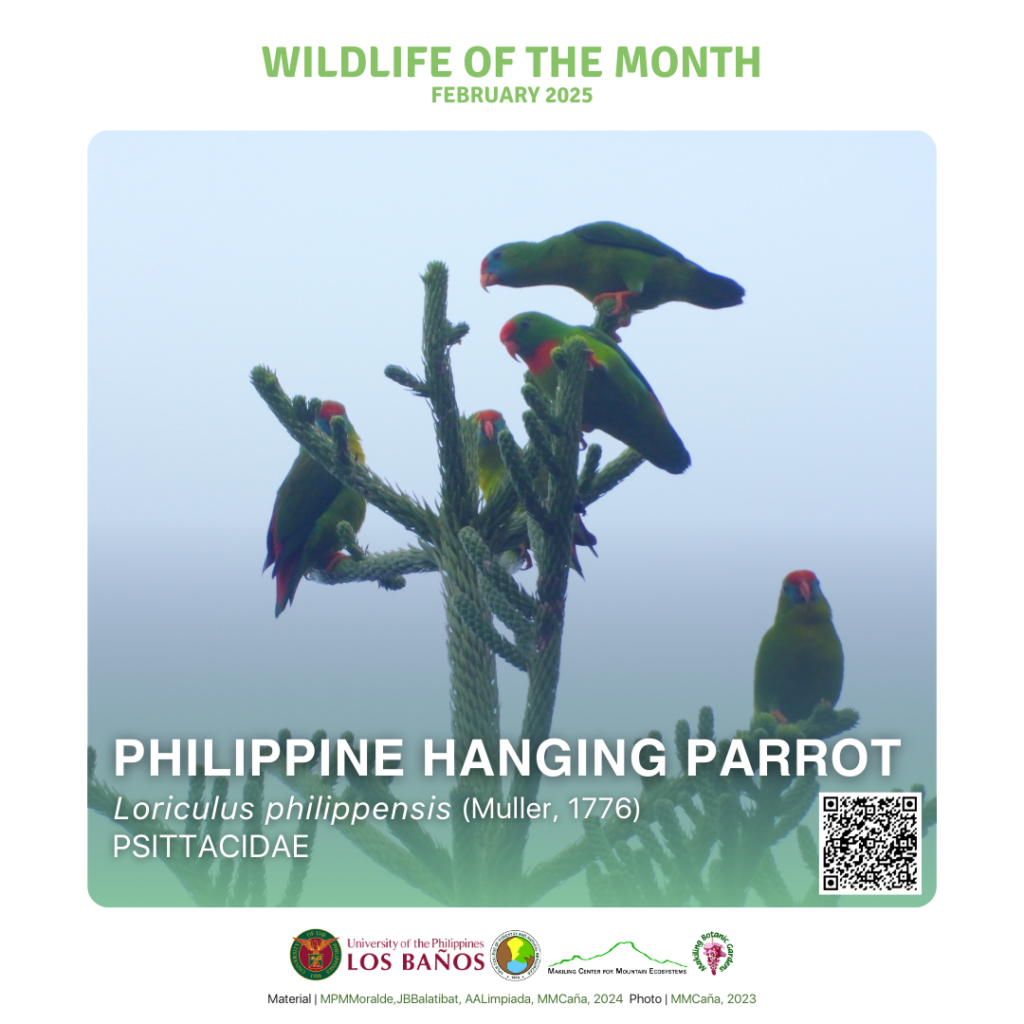
The Makiling Botanic Gardens (MBG) has named the Philippine Hanging Parrot (Loriculus philippensis) as the Wildlife of the Month (WOM) for February 2025. A member of the family Psittacidae, this vibrant bird is commonly known as “colasisi.”
Endemic to the Philippines, the colasisi is widely distributed across the country. It can be found on mainland Luzon and nearby islands such as Polillo, Marinduque, and Catanduanes. In the Visayas, it inhabits most islands except Siquijor, where it is believed to be extinct. The species is also present in Mindanao and several southern islands, with a particularly common presence in Palawan.
Like most members of the Psittaculidae family native to the Philippines, the colasisi features predominantly green plumage, accented with striking red, yellow, and blue markings that vary by subspecies. This species exhibits sexual dimorphism, with males distinguished by a vivid red patch on their chest. Unlike other parrots that gather in large flocks, colasisis are typically solitary or found in pairs, making their sightings a special occurrence in the wild.
These birds primarily inhabit woodlands, thriving in tropical lowland and montane forests. However, they have also adapted well to human-altered environments, frequently appearing in secondary forests and even urban areas. They are fairly common within the UPLB Campus, where their presence is easily noticed. Being primarily lowland dwellers, colasisis are seldom seen at higher elevations, making their occurrence in mountainous regions an uncommon sight.
The Philippine Hanging Parrot primarily feeds on soft fruits, nectar, blossoms, and seeds, playing an essential role in pollination and seed dispersal. Their reproduction follows an oviparous pattern, with females laying eggs in tree cavities or other sheltered locations.
The biggest threats to the colasisi include deforestation, environmental pollution, and poaching. Habitat destruction due to land conversion and illegal logging significantly reduces their natural habitat, while pollution affects their food sources and nesting sites. Additionally, the species is often targeted for the pet trade, further endangering wild populations.
Recognized for its striking appearance and small size, the Philippine Hanging Parrot plays a crucial role in local ecosystems as a seed disperser. Its inclusion as MBG’s Wildlife of the Month aims to raise awareness of its ecological importance and encourage conservation efforts.
By: JBBalatibat, AALimpiada, MMCaña 2025


